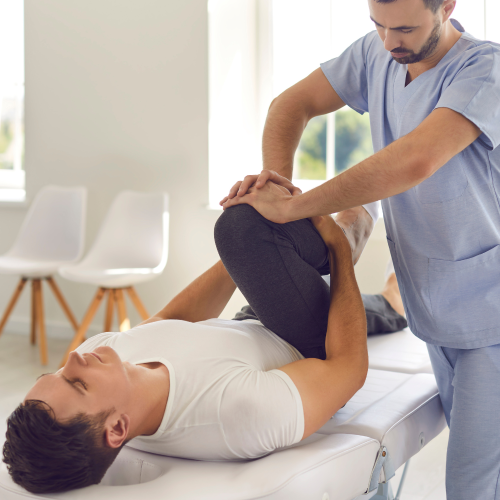Groin Strain Injuries: Symptoms, Causes, and Treatment
Groin strain injuries can be debilitating for both athletes and individuals. This type of injury occurs when the muscles on the inside of the thigh are stretched beyond their limits, resulting in tears. Understanding the symptoms, causes and effective treatments is critical to a speedy recovery and preventing recurrence.
If you suspect a groin strain, book an appointment with a physiotherapist at A7 Health
Symptoms of a groin strain
Common symptoms of a groin strain include pain or tenderness on the inside of the thigh, swelling and difficulty moving the leg. In severe cases, a popping sensation may be felt at the time of injury.

Causes of a groin strain
Groin strains are often caused by sudden movements, such as rapid changes of direction or excessive force on the inner thigh muscles. Sports that involve frequent twisting or kicking movements, such as soccer or hockey, increase the risk of groin injuries. Inadequate warm-up, muscular imbalance and overuse are also contributing factors.
Immediate treatment for a groin strain
Immediate treatment includes the R.I.C.E. protocol— – rest, ice, compression and elevation. Resting the affected area and applying ice can help to reduce swelling. Compression and elevation help to minimize further damage.
Physiotherapy treatment for a groin strain
Physiotherapy plays a crucial role in the recovery process. Physiotherapists use exercises to strengthen the affected muscles, improve flexibility and improve overall biomechanics. Manual techniques such as massage and stretching are often used to promote healing, prevent the formation of scar tissue and avoid recurrence of the injury. Book your appointment for treatment.
Treatment at A7 Health for Groin Strain Injuries:
Get Physiotherapy – Book an appointment with a Physiotherapist at A7 Health who will assess you in a 45 minute consultation and provide treatment alongside a rehabilitation plan to minimize risk of injury recurrence. Some of the treatments include:
- Massage for pain relief.
- Stretching to restore flexibility and improve overall mobility.
- Manual techniques to prevent formation of scar tissue and/or breakdown existing scar tissue.
- Strengthening exercises for your groin muscles to prevent injury recurrence.
